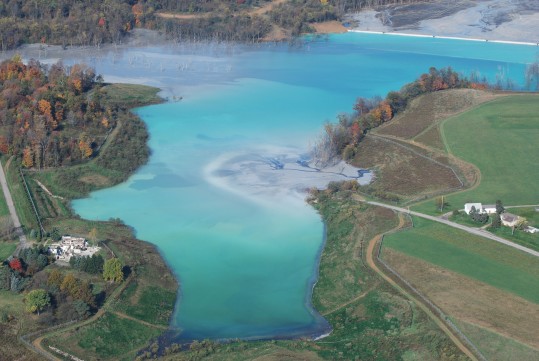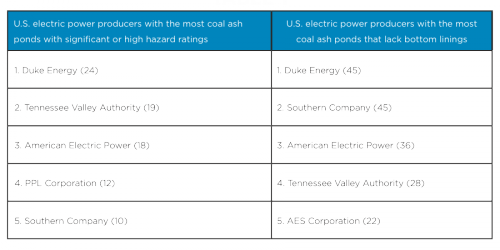Each year, the U.S. coal-fired power plant fleet produces over 130 million tons of coal ash. And while this ash frequently contains arsenic, lead, mercury, and other toxic chemicals that threaten human health, it is less regulated than your household trash.
For decades, power plants have disposed of coal ash in over 2,000 landfills and holding ponds around the country. These ponds and landfills can leach contaminants into groundwater and have even ruptured without warning, causing catastrophic ash spills.
Today, RAN published a new Coal Risk Update which looks at the growing legal, regulatory, and financial risks facing electric power producers from the disposal of coal ash in landfills and holding ponds.
Although coal ash is not currently regulated on the federal level, people living near coal ash ponds and landfills have filed several lawsuits that have forced power plant operators to clean up groundwater contamination from coal ash. This January, a major plaintiff litigation firm filed several lawsuits against the Southern Company, alleging that it engaged in racketeering, battery, fraud, and negligence by failing to put a lining on its 750-acre coal ash pond.
For U.S. electric power producers, coal ash ponds and landfills are likely to cause environmental compliance and legal headaches for decades to come. While coal ash is not currently regulated on the federal level, forthcoming EPA regulations are likely to force power plants to close coal ash ponds that lack a bottom lining and invest in costly ash handling upgrades at power plants.
Using EPA disclosures and data obtained by the Environmental Integrity Project and Earthjustice through a Freedom of Information Act request, we were able to rank U.S. electric power producers by their exposure to coal ash pond failure risk and groundwater contamination risk:
To date, the investor-owned electric power producers that rank highly on these lists have disclosed very little information about how they are managing coal ash-related risks. At companies that lack plans for closing or remediating ash ponds and landfills, impacted communities will bear the costs of ongoing contamination and the risks of catastrophic pond failures. This lack of transparency also leaves investors in these companies—who are ultimately on the hook for legal battles and coal ash cleanup projects—in the dark about coal ash-related risks.
(Image of the Little Blue Run coal ash pond courtesy Robert Donnan/Environmental Integrity Project)

